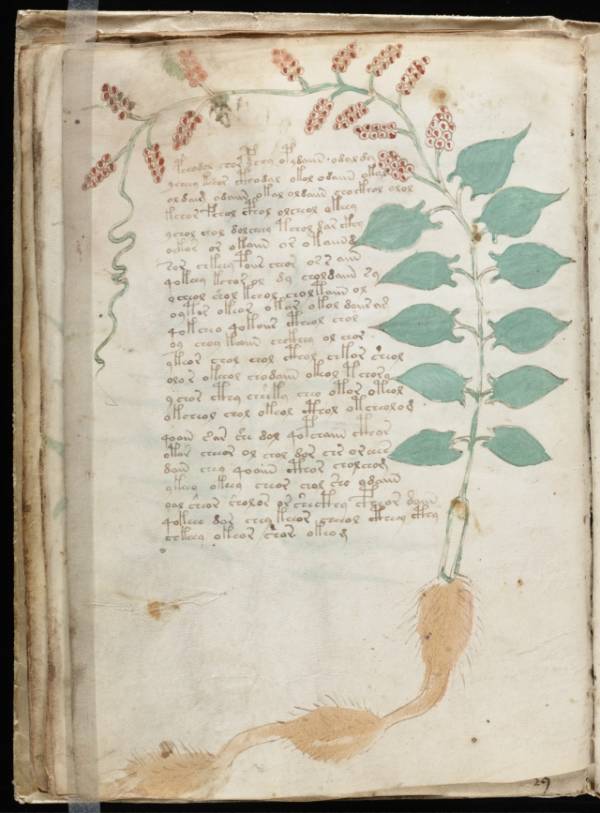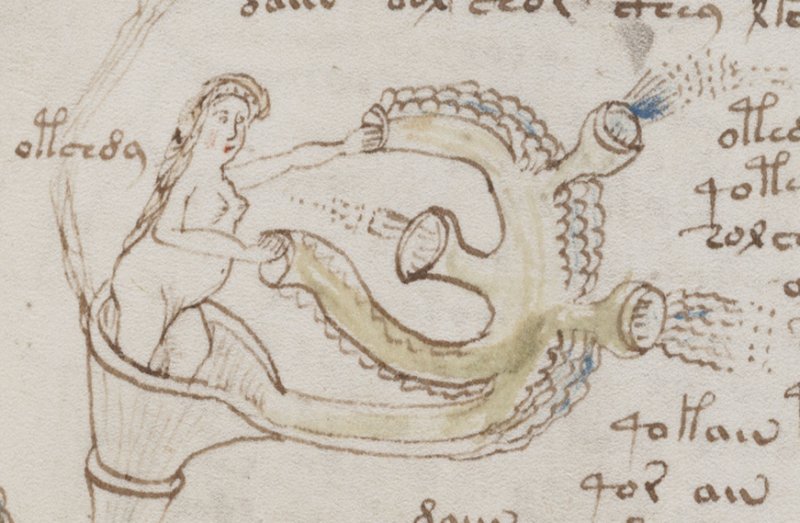
These designations can mislead by suggesting that we have some notion of what the images actually depict we do not. Scholars divide the illustrations into four groups by their resemblance to known subject matter: herbal, astrological, balneological (having to do with healing baths), and pharmacological. Reproduced courtesy of the Beinecke Rare Book and Manuscript Librar y, Yale University manuscript originally consisted of 116 leaves of calfskin parchment (numbered in a later hand), a few of which are now missing. Harkness (Yale University Press, 304 pp., $50) 1 4 7 R From the Voynich Manuscript, folio 33 verso. Named after Wilfrid Voynich, the colorful rare-book dealer who bought and publicized it in 1912, the T h e V o y n i c h M a n u s c r i p t, edited by Raymond Clemens, with an introduction by Deborah E. The ‘‘story’’ of the Voynich manuscript still lacks an ending, six hundred years after it began. An unsolved mystery is an unfinished story. We speak, almost teleologically, of a mystery ‘‘waiting’’ to be solved. In the myth of ancient Crete, the hero is Theseus, who finds his way through the labyrinth, not Daedalus, who designed it.

In our conventional system, mystery is static, resolution is dynamic, and dynamism is heroic. The modern world, or at least the modern West, rejects that archetype.

We can at least imagine a culture in which the creation of the mystery, not its resolution, is celebrated: the treasure so cleverly hidden that it is never found.
#VOYNICH MANUSCRIPT SOLVED 2017 CRACKED#
The hidden treasure found, the impenetrable cipher decrypted, the cold case cracked at last a√ord both intellectual and emotional satisfaction. None of the many speculative solutions proposed over the last hundred years has yet been independently verified.In lieu of an abstract, here is a brief excerpt of the content:ġ 4 6 Y T H E U N K N O W N I S S T I L L W I N N I N G T H E V O Y N I C H M A N U S C R I P T J A M E S T R I L L I N G Everyone loves a mystery – and the person who solves it. The mystery surrounding it has excited the popular imagination, making the manuscript a subject of both fanciful theories and novels. It has defied all decipherment attempts, becoming a famous case of historical cryptology.
#VOYNICH MANUSCRIPT SOLVED 2017 PROFESSIONAL#
Possibly some form of encrypted ciphertext, the Voynich manuscript has been studied by many professional and amateur cryptographers, including American and British codebreakers from both World War I and World War II.

However, most of the plants do not match known species, and the manuscript’s script and language remain unknown. Much of the manuscript resembles herbal manuscripts of the 1500s, seeming to present illustrations and information about plants and their possible uses for medical purposes. Some pages are missing, but there are now about 240 vellum pages, most with illustrations.

It is named after the book dealer Wilfrid Voynich, who purchased it in 1912. The Voynich manuscript, described as “the world’s most mysterious manuscript”, is a work which dates to the early 15th century (1404–1438), possibly from northern Italy.


 0 kommentar(er)
0 kommentar(er)
